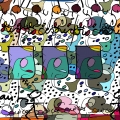Cross-functional projects

Take inspiration from agile project management methods
Well-suited to complex environments, so-called “agile” project management methods are increasingly popular. What are the conditions required to reap the full benefits of the agile approach?

Work on your authority
If the focus is today on cooperation, autority still remains an essential ingredient of performance. How can you develop your power and leadership to maximize the value you bring to the organization?

Integrate the human factor to improve project management
The reason why so many projects fail lies less in disciplined project management than in the irrational dimension that influences day-to-day action. How can we integrate this human factor?

Foster cooperation across organizational boundaries
Rather than a question of ill will or indiscipline, lack of cooperation is often a result of the need for belonging that governs our interpersonal relationships. How can we take this into account to boost collaboration?

Combining individuals into a real team
How can you capitalize on differences to work together more effectively and create real team momentum?

The keys to lateral leadership
Today, hierarchical authority is becoming less effective in obtaining the adhesion of partners and employees. Managers must thus develop their lateral leadership skills.

Leading cross-functional teams
Cross-boundary teams can help break down organizational silos and reinforce responsiveness. However, coordinating teams that cut across organizational boundaries is a real challenge. What key drivers do employers possess to accomplish this?

Participative management in the 2.0 era
In times of free exchanges in discussion forums and instantaneous information flow through social networks and Twitter, traditional intra-company communication channels look archaic. How can one foster a real conversation between an organization and its employees?

From heroic to authentic leadership
The observation of sustainably successful leaders highlights a reality that is clearly different from the fantasized figure of the conquering hero. How can we become aware of this gap between the fantasy and the reality to develop our leadership qualities?
